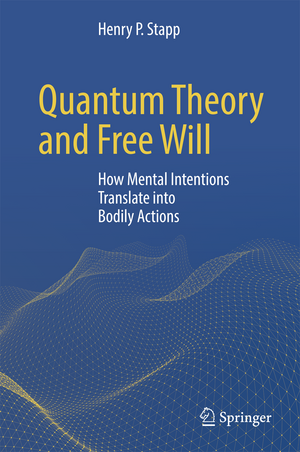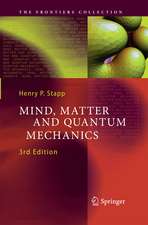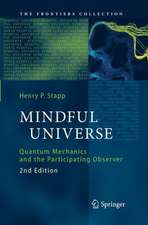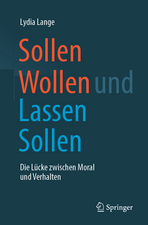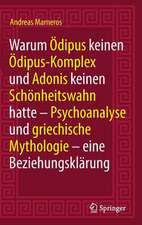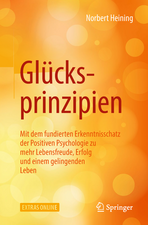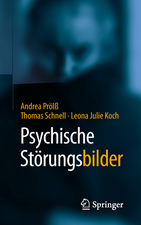Quantum Theory and Free Will: How Mental Intentions Translate into Bodily Actions
Autor Henry P. Stappen Limba Engleză Hardback – 3 iul 2017
| Toate formatele și edițiile | Preț | Express |
|---|---|---|
| Paperback (1) | 479.67 lei 6-8 săpt. | |
| Springer International Publishing – 4 aug 2018 | 479.67 lei 6-8 săpt. | |
| Hardback (1) | 394.31 lei 3-5 săpt. | +136.09 lei 10-14 zile |
| Springer International Publishing – 3 iul 2017 | 394.31 lei 3-5 săpt. | +136.09 lei 10-14 zile |
Preț: 394.31 lei
Preț vechi: 475.07 lei
-17% Nou
Puncte Express: 591
Preț estimativ în valută:
75.45€ • 78.99$ • 62.43£
75.45€ • 78.99$ • 62.43£
Carte disponibilă
Livrare economică 15-29 martie
Livrare express 04-08 martie pentru 146.08 lei
Preluare comenzi: 021 569.72.76
Specificații
ISBN-13: 9783319583006
ISBN-10: 331958300X
Pagini: 142
Ilustrații: XII, 142 p. 3 illus. in color.
Dimensiuni: 155 x 235 x 14 mm
Greutate: 3.61 kg
Ediția:1st ed. 2017
Editura: Springer International Publishing
Colecția Springer
Locul publicării:Cham, Switzerland
ISBN-10: 331958300X
Pagini: 142
Ilustrații: XII, 142 p. 3 illus. in color.
Dimensiuni: 155 x 235 x 14 mm
Greutate: 3.61 kg
Ediția:1st ed. 2017
Editura: Springer International Publishing
Colecția Springer
Locul publicării:Cham, Switzerland
Cuprins
The Origins of the Quantum Conception of Man.- Waves, Particles, and Minds.- The Measuring Process.- Quantum Neuroscience.- The Physical Effectiveness of Mental Intent.- Reality and Spooky Action at a Distance.- Backward-in-Time Causation?.- Actual Past and Effective Past.- The Libet “Free Will” Experiments.- Questions and Answers About Minds.- The Fundamentally Mental Character of Reality.- Conclusions.
Notă biografică
Henry Pierce Stapp is an American mathematical physicist who worked closely with Werner Heisenberg, Wolfgang Pauli, and J.A. Wheeler. He is known for his work in quantum mechanics, particularly the development of axiomatic S-matrix theory, the proofs of strong nonlocality properties, and the place of free will in the "orthodox" quantum mechanics of John von Neumann. Dr. Stapp has published many papers pertaining to the non-local aspects of quantum mechanics and Bell's theorem, as well as two books published by Springer.
Textul de pe ultima copertă
This book explains, in simple but accurate terms, how orthodox quantum mechanics works. The author, a distinguished theoretical physicist, shows how this theory, realistically interpreted, assigns an important role to our conscious free choices. Stapp claims that mainstream biology and neuroscience, despite nearly a century of quantum physics, still stick essentially to failed classical precepts in which mental intentions have no effect upon our bodily actions. He shows how quantum mechanics provides a rational basis for a better understanding of this connection, even allowing an explanation of certain phenomena currently held to be “paranormal”. These ideas have major implications for our understanding of ourselves and our mental processes, and thus also for the meaningfulness of our lives.
Caracteristici
Explains the philosophy behind quantum mechanics Considers whether phenomena commonly considered "paranormal" can be accommodated by quantum mechanics Avoids equations almost completely! Includes supplementary material: sn.pub/extras Includes supplementary material: sn.pub/extras
